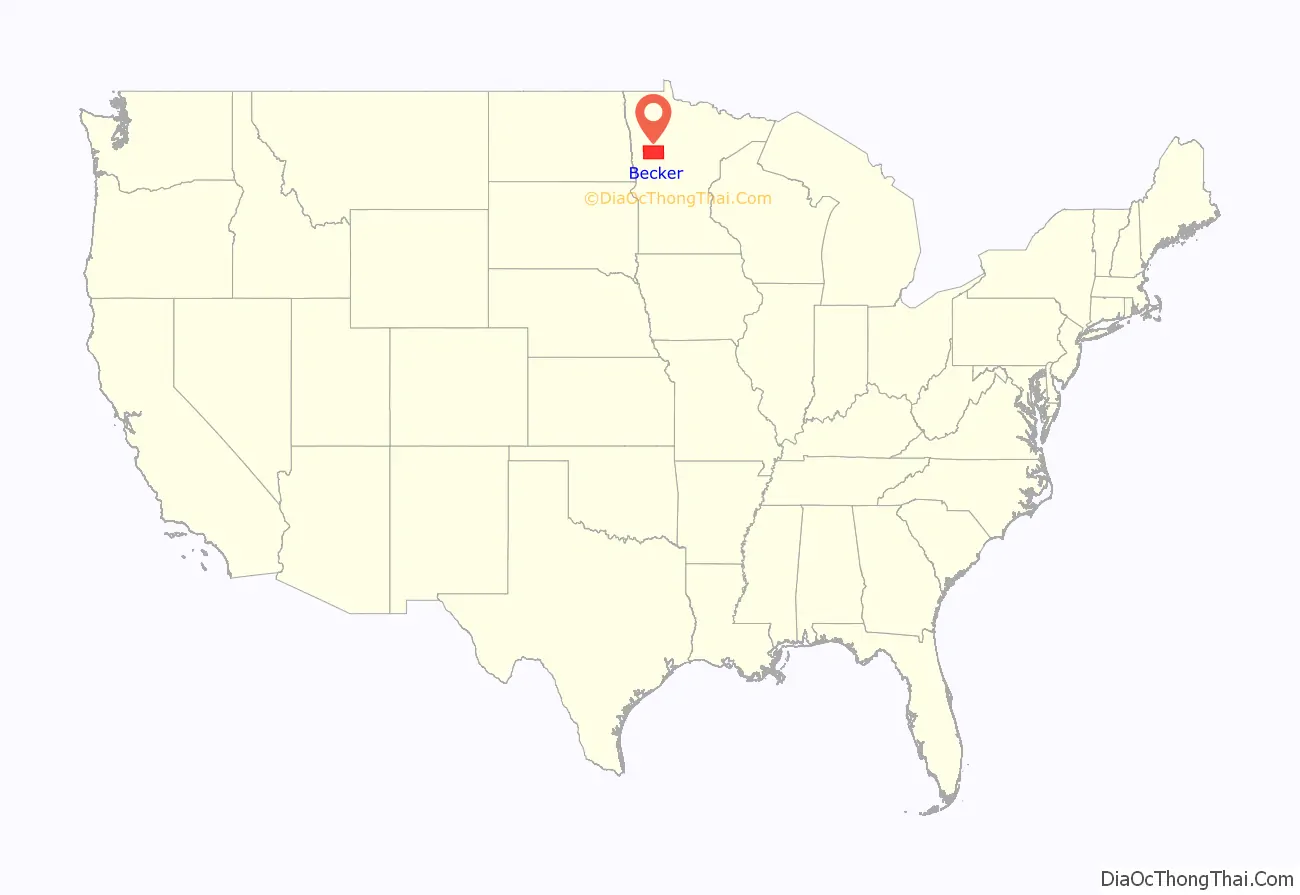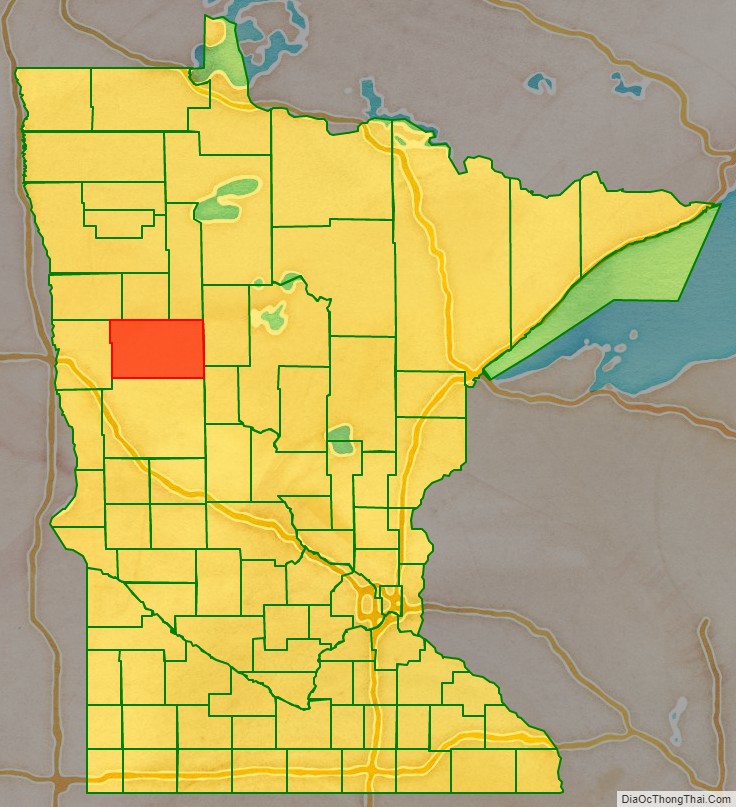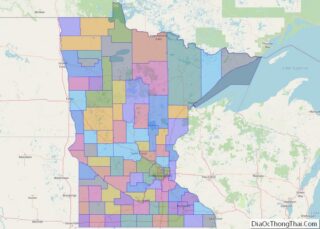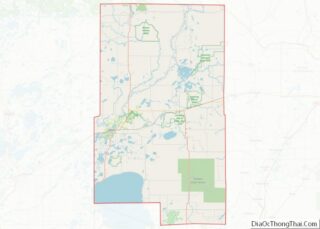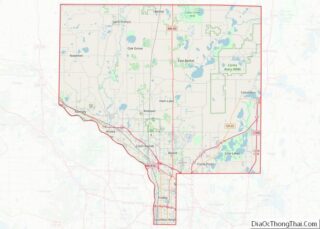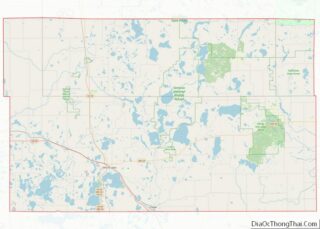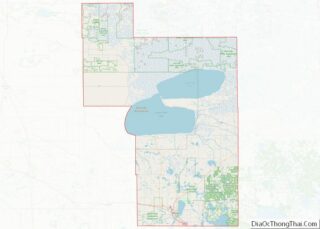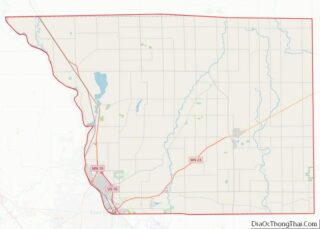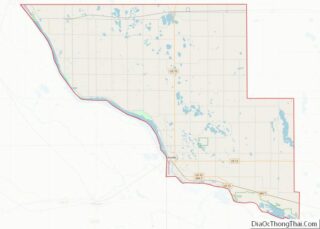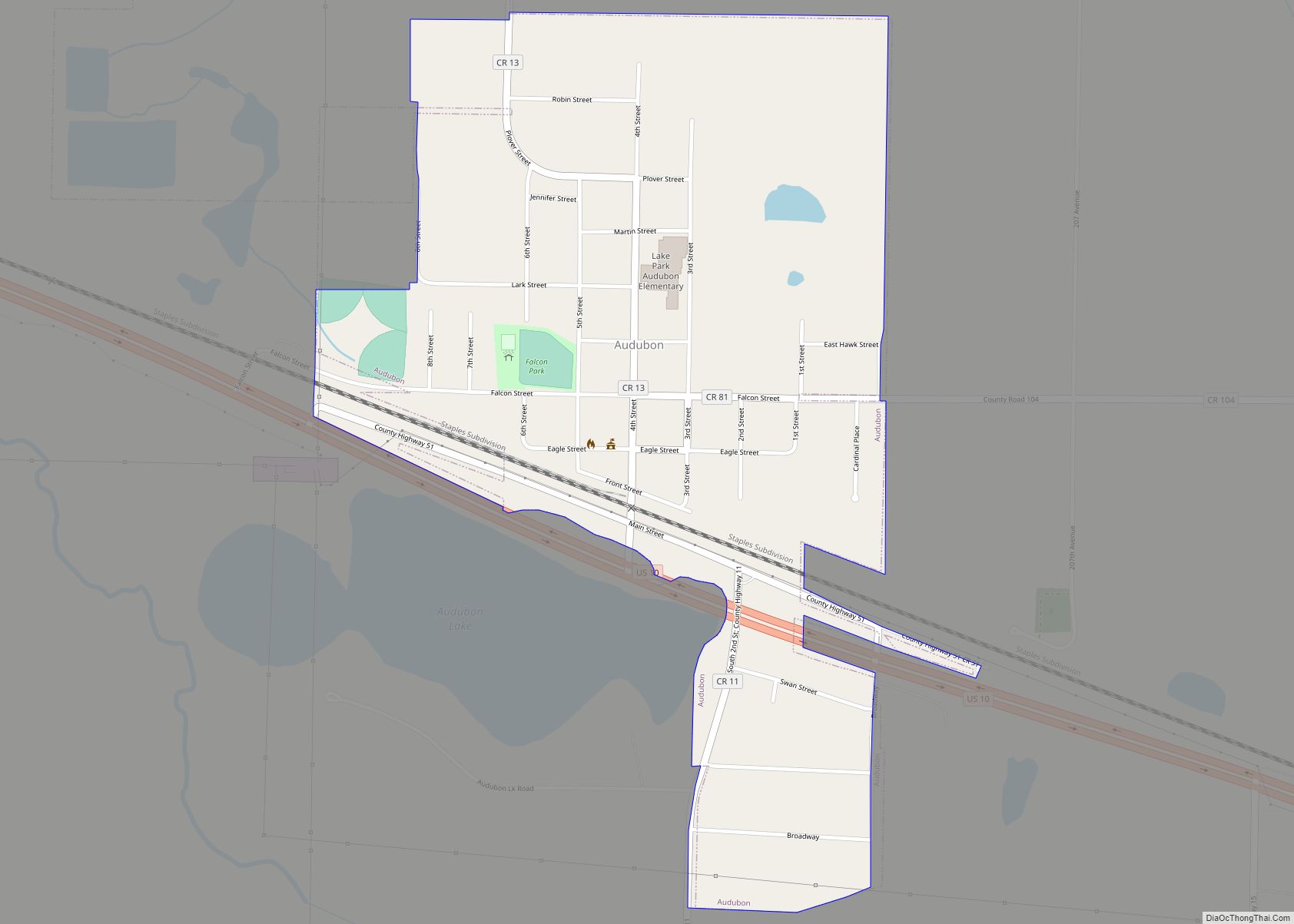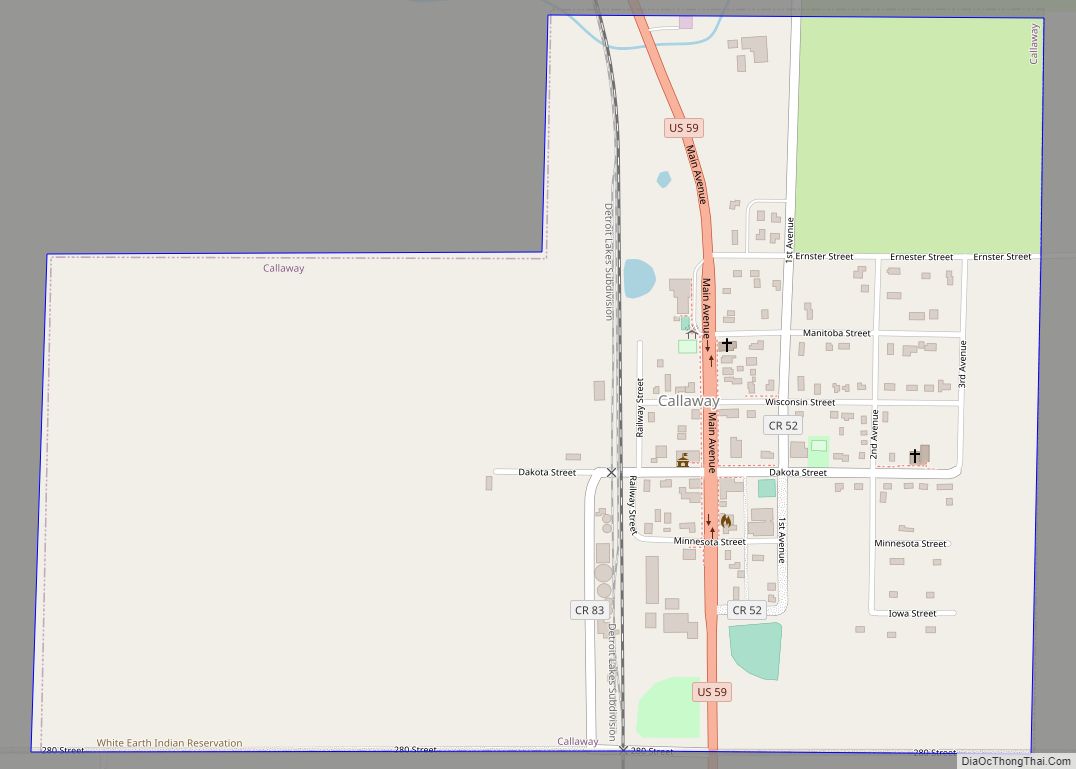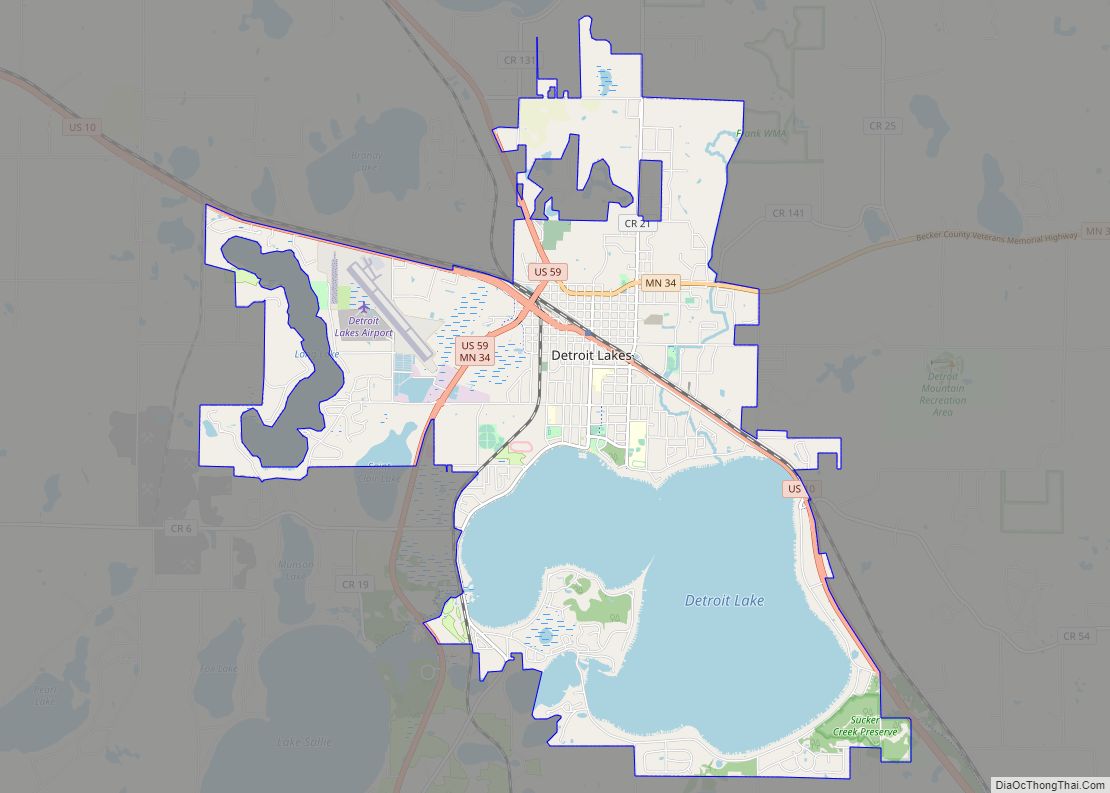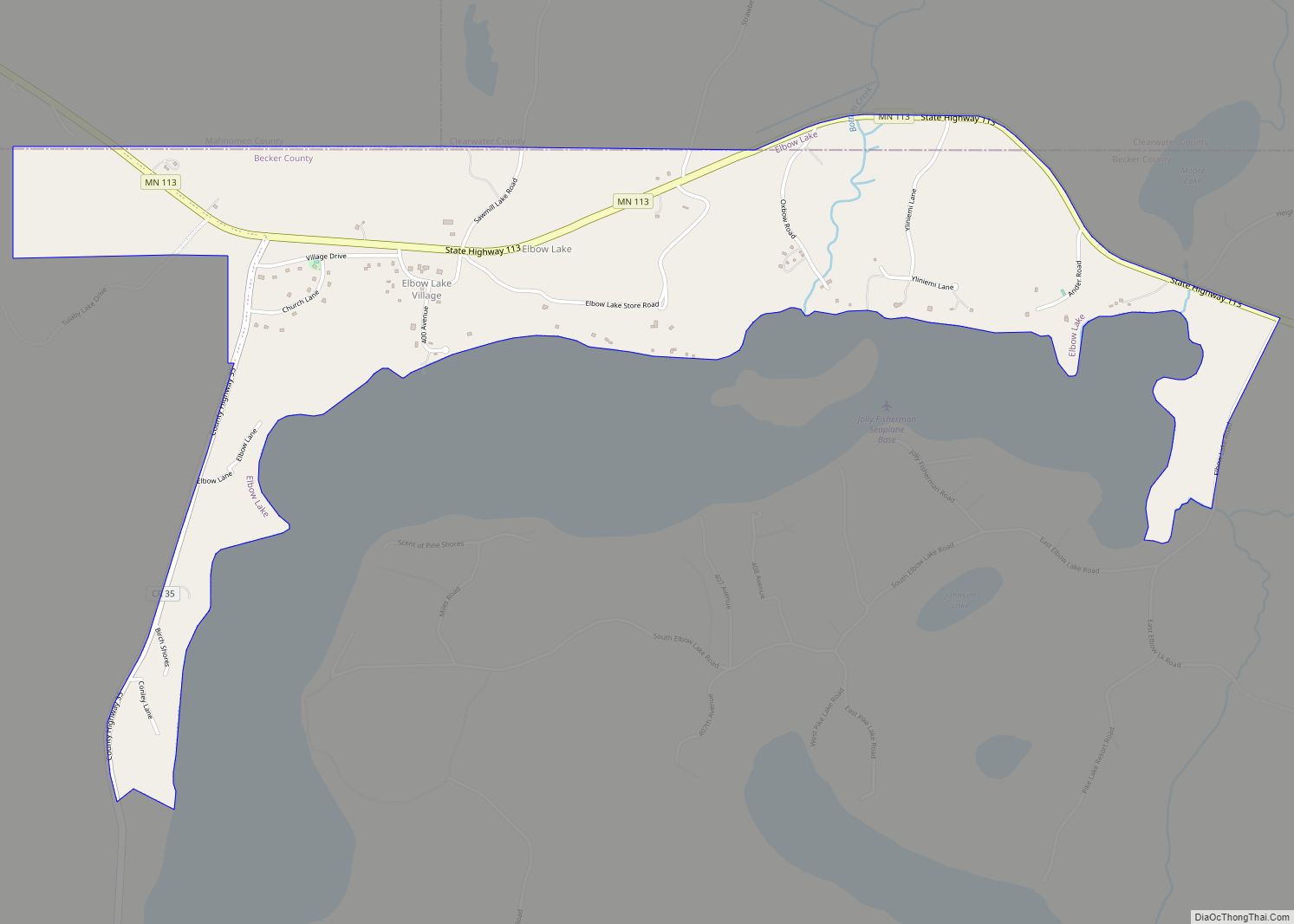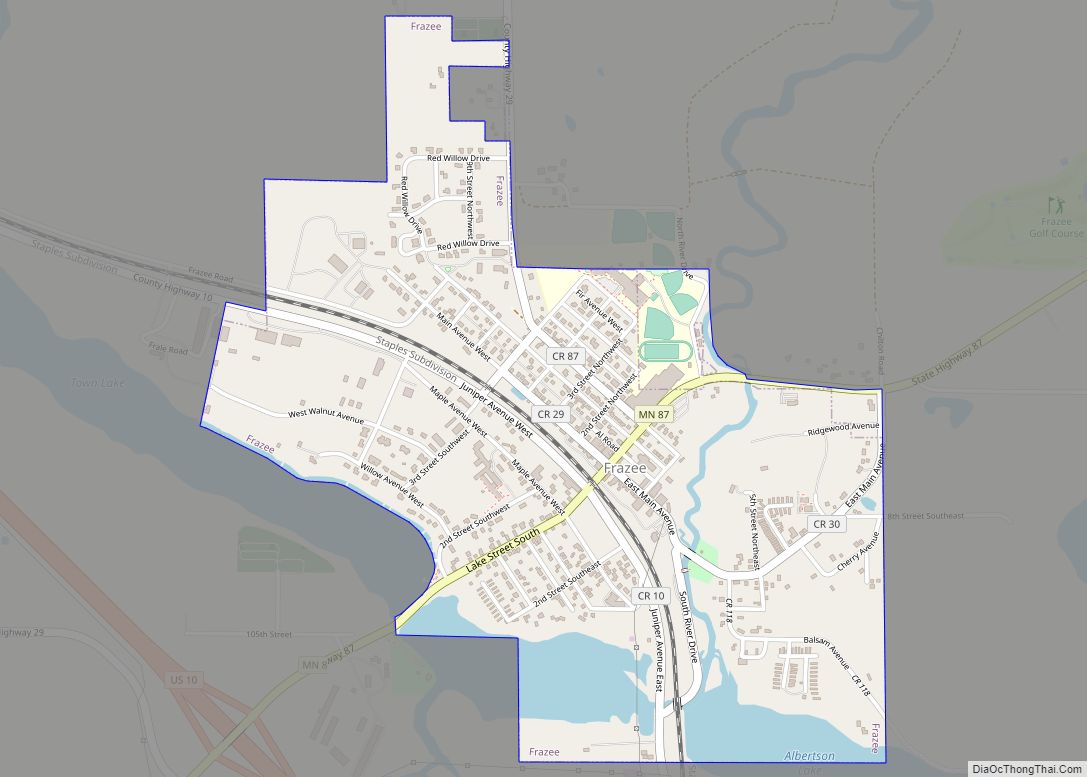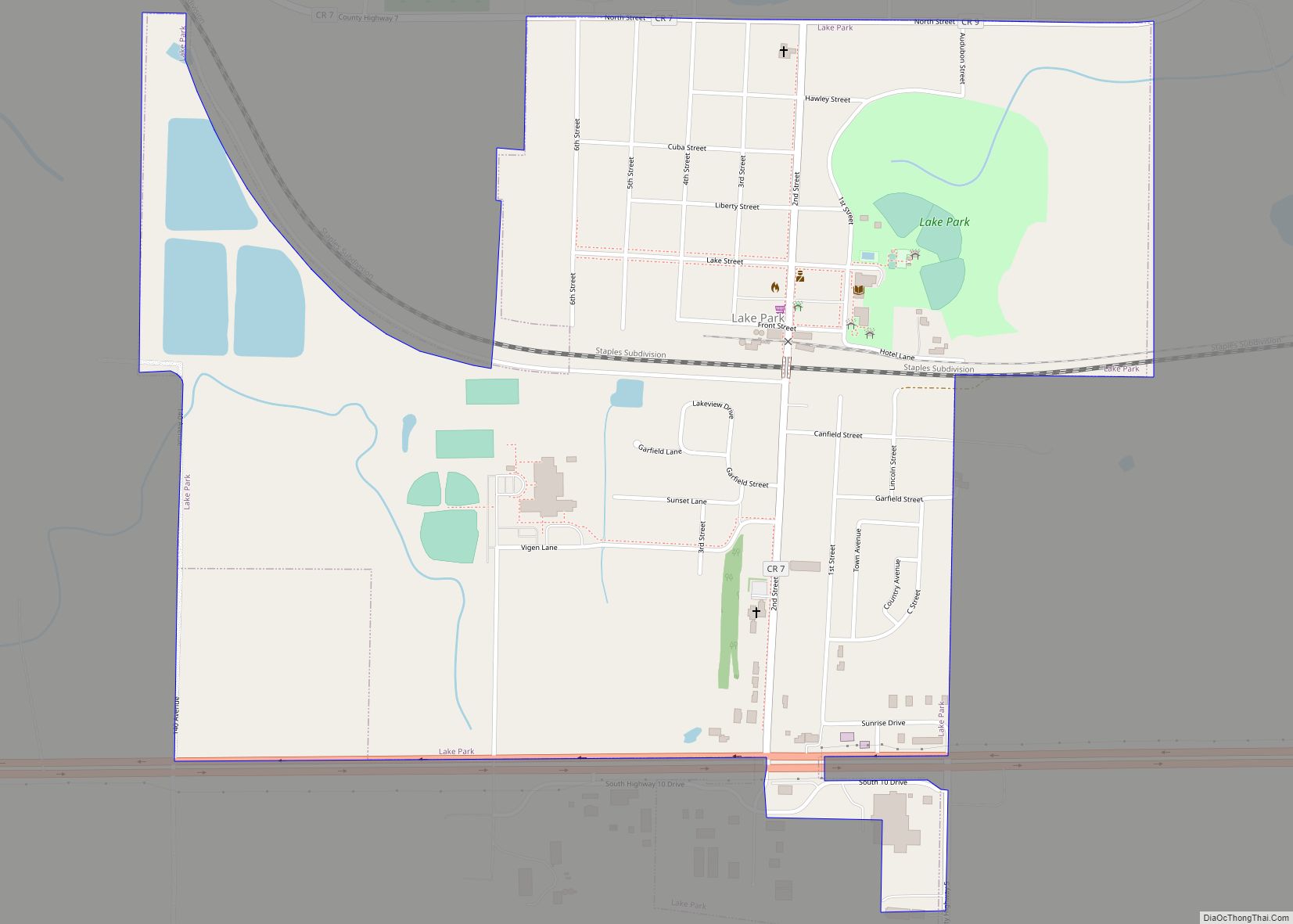Becker County is a county in the U.S. state of Minnesota. As of the 2020 census, the population was 35,183. Its county seat is Detroit Lakes. Part of the White Earth Indian Reservation extends into the county. The county was created in 1858 and organized in 1871.
| Name: | Becker County |
|---|---|
| FIPS code: | 27-005 |
| State: | Minnesota |
| Founded: | 1858 |
| Named for: | George Loomis Becker |
| Seat: | Detroit Lakes |
| Largest city: | Detroit Lakes |
| Total Area: | 1,445 sq mi (3,740 km²) |
| Land Area: | 1,315 sq mi (3,410 km²) |
| Total Population: | 35,183 |
| Population Density: | 25.9/sq mi (10.0/km²) |
| Time zone: | UTC−6 (Central) |
| Summer Time Zone (DST): | UTC−5 (CDT) |
| Website: | www.co.becker.mn.us |
Becker County location map. Where is Becker County?
History
Becker County became a county on March 18, 1858. It was named for George Loomis Becker, one of three men elected to Congress when Minnesota became a state. Since Minnesota could only send two, Becker elected to stay behind, and he was promised to have a county named after him.
Colonel George Johnston founded the city of Detroit Lakes in 1871. It grew quickly with the construction of the Northern Pacific Railroad. Johnston led settlers from New England to settle in this region. An 1877 election decided that Detroit Lakes, then known as Detroit, would become the county seat. Detroit won the election by a 90% majority. Frazee, Lake Park, and Audubon were also in the running.
In 1884, Detroit Lakes had many businesses, including two hotels, a bank, a newspaper, and an opera house. The first courthouse was built that year. In 1885, the first county fire department was constructed. In 1903, the Soo Line Railroad built a line through the county.
Detroit Lakes hosts a park dedicated to the Grand Army of the Republic. The city rededicated the park on April 15, 2015, marking the 150th anniversary of the end of the Civil War and the death of President Lincoln. Colonel Tom Mortenson and his wife, Pam, sponsored the rededication, representing the Women’s Relief Corps, which spearheaded community support for the effort that included new signage for the park and a time capsule to be opened on the 200th anniversary.
Becker County Road Map
Geography
The county terrain consists of low rolling hills, tree-covered and dotted with lakes and ponds. The terrain slopes to the west and north. Its highest point is a hill 2.1 miles (3.4 km) northeast of Wolf Lake, the site of the USFS Wolf Lake lookout tower, at 1,861′ (567m) ASL. The next highest point is near its northwest corner, at 1,631′ (497m) ASL. The county has an area of 1,445 square miles (3,740 km), of which 1,315 square miles (3,410 km) is land and 130 square miles (340 km) (9.0%) is water.
Becker County has diverse topography. It is home to several hundred lakes, many acres of fertile farm land, and forested areas. Much of the land consists of hills and deciduous trees.
Major highways
- U.S. Highway 10
- U.S. Highway 59
- Minnesota State Highway 34
- Minnesota State Highway 87
- Minnesota State Highway 113
Adjacent counties
- Mahnomen County – north
- Clearwater County – northeast
- Hubbard County – northeast
- Wadena County – southeast
- Otter Tail County – south
- Clay County – west
- Norman County – northwest
Protected areas
- Atlanta State Wildlife Management Area
- Becker State Wildlife Management Area
- Callaway State Wildlife Management Area
- Frank State Wildlife Management Area
- Greenwater Lake Scientific and Natural Area
- Hamden Slough National Wildlife Refuge
- Hasca State Park (part)
- Lunde State Wildlife Management Area
- Melbye State Wildlife Management Area
- Ogema Springs State Wildlife Management Area
- Pednor State Wildlife Management Area
- Riparia State Wildlife Management Area
- Smoky Hills State Forest
- Tamarac National Wildlife Refuge
- Tamarac Wilderness
- Teiken-Dalve State Wildlife Management Area
- Two Inlets State Forest
- White Earth State Wildlife Management Area
